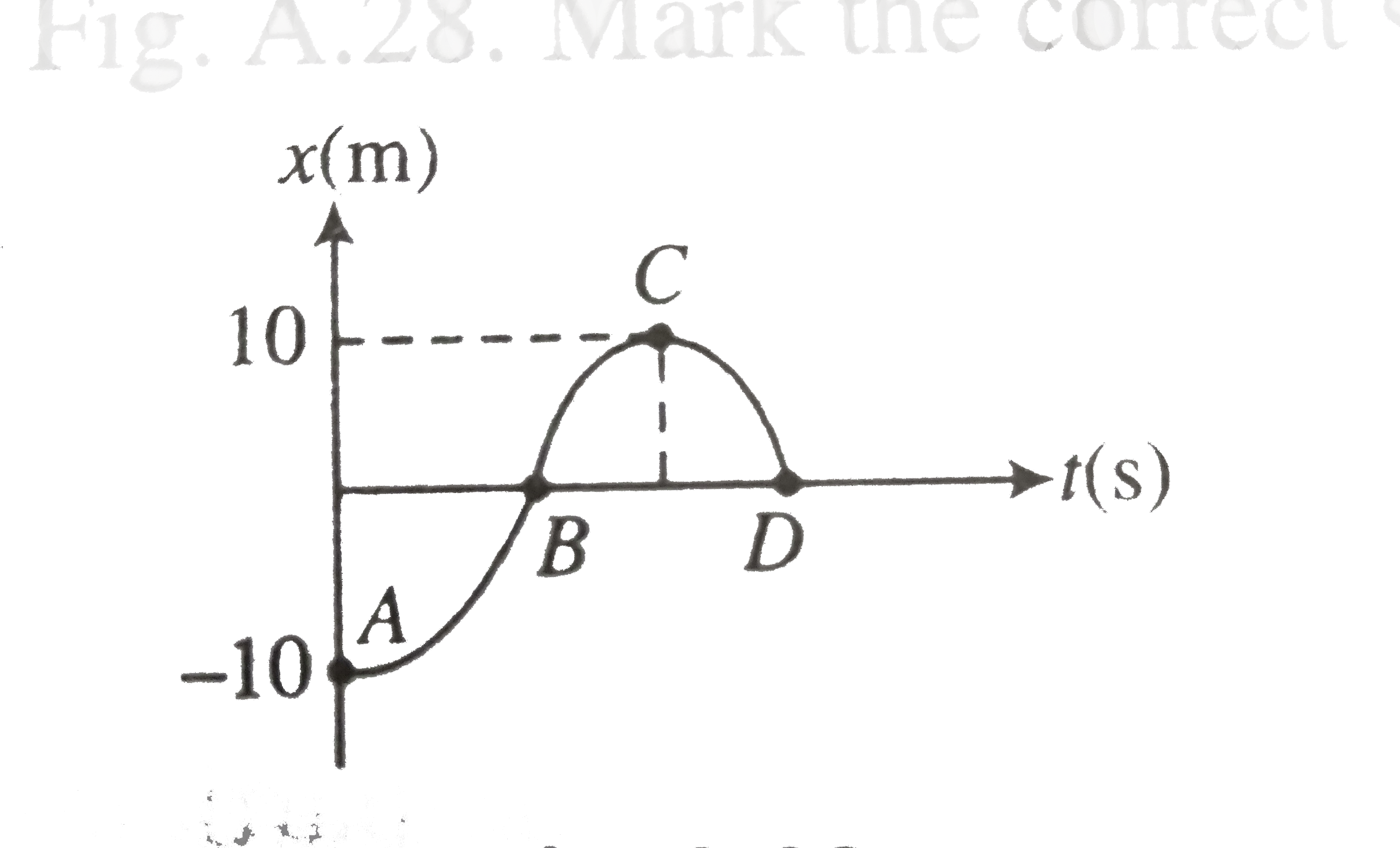A particle is moving along the x-axis whose position is given by x=4−9t+t33. Mark the correct statement(s) in relation to its motion.
Direction of motion is not changing at any of the instants
For 0<t<2s, the particle is speeding up
Direction of motion is changing at t=3sec
For 0<t<3s the particle is speeding up.
The correct Answer is:C
x=4−9t+t33⇒v=dxdt=(−9+t2) and a=(dvdt)=2t. Therefore (v<0 and a>0 for 0<t<3s)
Topper's Solved these Questions
- TEST PAPERBOOK - ALLENCHAPTER - TEST PAPEREXERCISE - PHYSICS
4 Videos
- TEST PAPERBOOK - ALLENCHAPTER - TEST PAPEREXERCISE - PHYSICS
4 Videos
- SIMPLE HARMONIC MOTIONBOOK - ALLENCHAPTER - SIMPLE HARMONIC MOTIONEXERCISE - Example
1 Videos
- TEST PAPER 1BOOK - ALLENCHAPTER - TEST PAPER 1EXERCISE - PHYSICS
11 Videos
Similar Questions
A particle is moving along the x-axis whose acceleration is given by a=3x−4, where x is the location of the particle. At t = 0, the particle is at rest at x=4/3m. The distance travelled by the particles in 5 s is
View SolutionA particle moves along the X-axis as x=u(t−2s)+a(t−2s)2.
View SolutionA particle moves along x-axis such that its position veries with time as x=50t−5t2. Select the correct alternative (s).
View SolutionA particle moves along the X-axis as x=u(t−2s)=at(t−2)2.
View SolutionFor a particle moving along the x-axis, mark the correct statement(s).
View SolutionA particle is performing a motion on the x-axis with its position given by x=A+Bsinωt. The amplitude of particle is
View SolutionA particle is moving along straight line whose position x at time t is described by x=t3−t2 where x is in meters and tis in seconds . Then the average acceleration from t=2 sec. to t=4 sec, is :
View SolutionA particle is moving along the x-axis with its cordinate with time 't' given by x(t)=10+8t−3t2. Another particle is moving along the y-axis with its coordinate as a function of time given by y(t)=5−8t2 At t=1 s, the speed of the4 second particle as measured in the frame of the first particle is given as √v. Then v (in m//s) is
View SolutionFor a particle moving along x-axis, a scaled x-6 graph is shown in figure. Mark the correct statement (s).

View SolutionThe motion of a Particle moving along then y- axis is represented as y=3(t–2)+5(t–2)2 Identify the correct statement
View Solution
